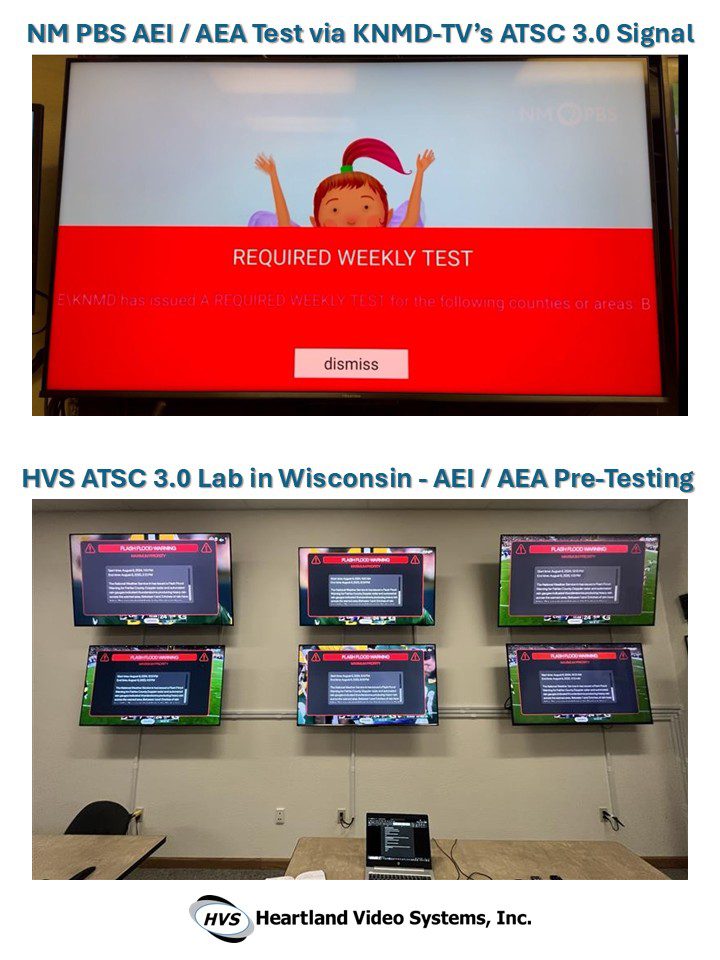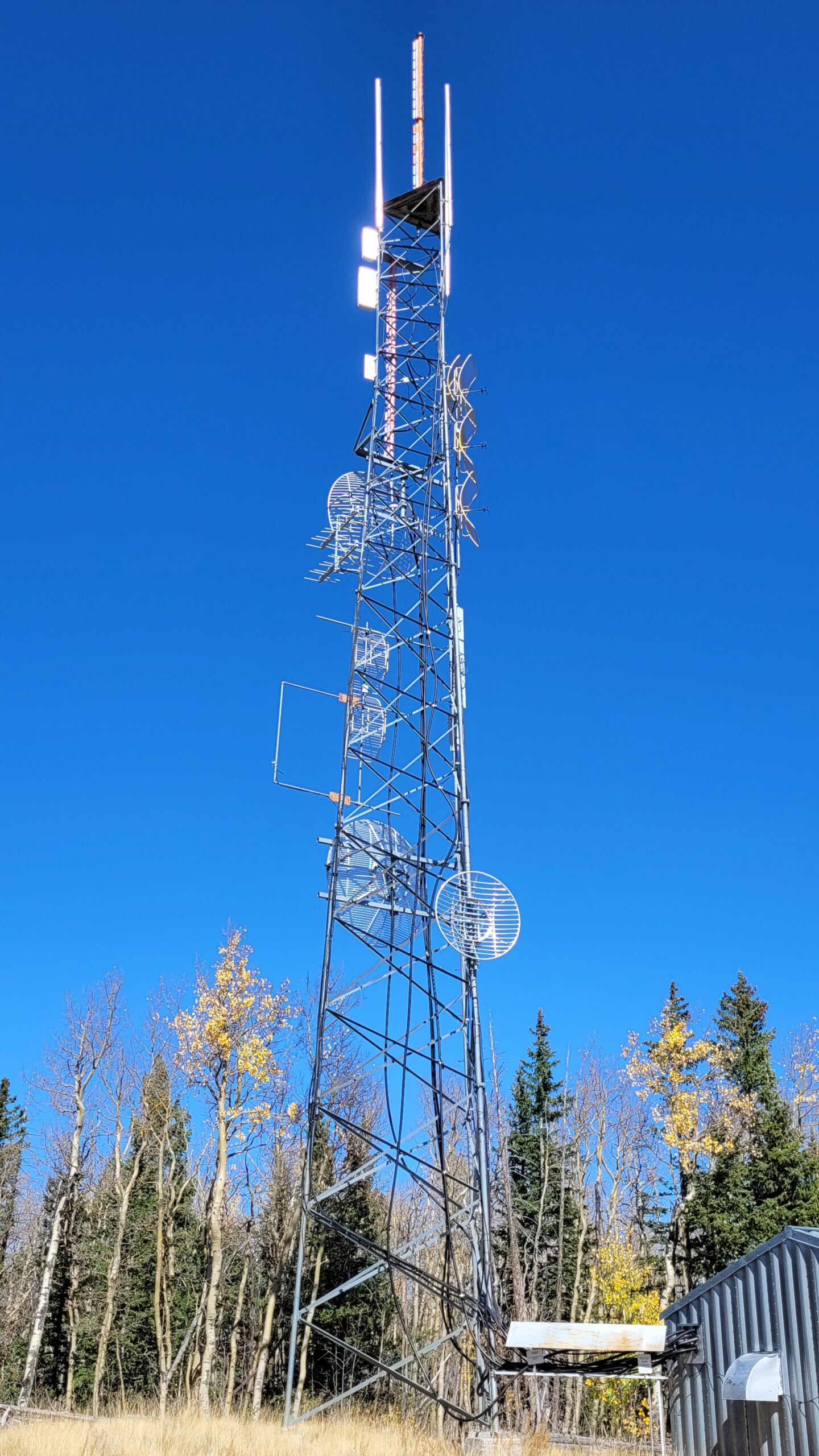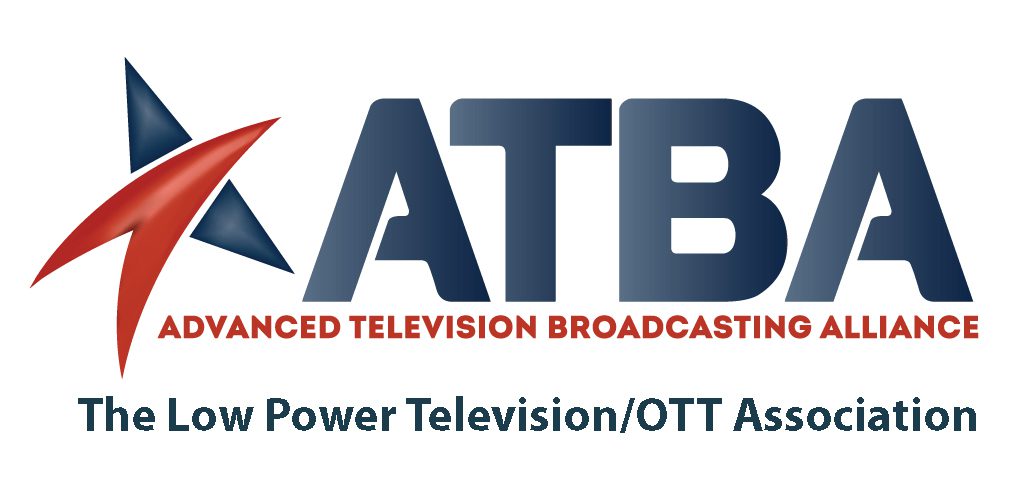
Bridging Broadcast's Future: 5G Broadcast vs. ATSC 3.0 Debate Sparks New Vision for LPTV
At the 2025 NAB Show, the Advanced Television Broadcasting Alliance (ATBA) hosted a highly anticipated and refreshingly honest debate that could help shape the future of Low Power Television (LPTV). Titled “5G Broadcast vs. ATSC 3.0 – Competing Visions or Complementary Tools?” the session featured two of the most influential voices in the space: Vern Fotheringham, a wireless innovator and co-founder of BIDA (Broadcast Internet & Digital Alliance), and Mark Aitken, President of ONE Media and a key architect of ATSC 3.0.
Moderated by Dr. Josh Weiss, ATBA Board Member and LPTV owner, the discussion dove deep into how each technology framework could serve LPTV station owners and operators. What emerged wasn’t a clash of ideologies but a compelling convergence around the potential synergy between ATSC 3.0 and 5G Broadcast.
Key Takeaways:
1. ATSC 3.0: Built for Evolution, Ready for Innovation
Mark Aitken reaffirmed why ATSC 3.0 is widely recognized as “the best broadcast standard in the world.” Designed with a bootstrap layer and a flexible architecture, ATSC 3.0 enables broadcasters to adapt over time—offering not just television delivery, but robust data transmission services. Aitken emphasized the importance of maintaining regulatory stability to preserve broadcaster value and guard against spectrum sell-offs that could destabilize LPTV.
2. 5G Broadcast: An Application, Not a Replacement
Vern Fotheringham clarified that 5G Broadcast isn’t a competitor to ATSC 3.0, but rather an “application layer” that could ride atop the existing standard. Calling it a “killer app” for the low power industry, Vern explained how a hybrid approach can enable LPTV broadcasters to leverage their spectrum for mobile, data-centric, and IoT services. This path allows stations to participate in the rapidly growing 5G ecosystem without abandoning ATSC 3.0.
3. The Hybrid Future: ATSC 3.0 + 5G Broadcast
Perhaps the most exciting outcome of the debate was consensus: both experts endorsed the hybrid model as the best path forward for LPTV. This model enables broadcasters to keep their investment in ATSC 3.0 while layering 5G Broadcast capabilities as demand and device compatibility evolve.
4. The Role of LPTV: Spectrum Opportunity Meets Grassroots Innovation
Throughout the session, both speakers acknowledged the unique position of LPTV in this next phase of broadcast transformation. Low power stations, with their ability to flash-cut and scale distributed transmission systems, hold a distinct advantage in deploying broadcast internet services. Aitken and Fotheringham encouraged collaboration among LPTV licensees to create a national, scalable network ready for monetization and service innovation.
5. Industry Urgency: Don’t Wait to Act
Both speakers issued a word of caution: the window of opportunity is now. With ATSC 1.0 eventually sunsetting and the growing momentum behind broadcast internet, station owners should prepare to make infrastructure investments and build relationships that support long-term growth.
Whether you’re bullish on 5G, loyal to ATSC 3.0, or cautiously evaluating both—this conversation marks a turning point. The broadcast future isn’t an “either/or” proposition. It’s a “yes, and.” And for LPTV operators, that future is brighter—and more technically exciting—than ever before.
🎥 Watch the full video debate Here.
📣 Stay tuned for further updates, partner opportunities, and educational resources from ATBA as we continue advancing television—together.
Click here for the full postHeartland Video Systems Helps New Mexico PBS Optimize Their ATSC 3.0 OTA Signal with AEI/AEA and an ATSC 3.0 Translator
PLYMOUTH, Wis. — April 3, 2025 — Heartland Video Systems, Inc. (HVS), a premier video systems integration and consulting firm, announces that our ATSC 3.0 expert team has assisted New Mexico PBS (NMPBS) to optimize their existing ATSC 3.0 over-the-air (OTA) signal with Advanced Emergency Information (AEI) / Advanced Emergency Alert (AEA) capability. In addition, HVS supplied NMPBS the necessary equipment for the country’s very first ATSC 3.0 translator that works in conjunction with their existing ATSC 3.0 facility.

Advanced Emergency Information (AEI) is a new capability within the ATSC 3.0 TV standard available to all broadcasters. The current Emergency Alert System (EAS) was deployed in the late 90’s and provides standardized messaging for DTV and radio broadcasters. In ATSC 1.0, the EAS signal is implemented via audio messaging and is usually accompanied with a text crawl across the live video program. It is important to remember that EAS is mandatory for ATSC 1.0 and 3.0 OTA broadcasts.
AEI is in addition to EAS and supplements the warnings with additional real-time data customized to the region or type of emergency. AEI can also be used to provide non-emergency information such as school closings, traffic updates, and other community specific alerts. And consumers will have the ability to opt in or out for AEI updates.
To take full advantage of AEI, a TV station needs to implement a Broadcaster App (BA) as part of their OTA signal. The BA is used in the consumer’s ATSC 3.0 receiver providing the ability to properly render or display the AEI information on the consumer’s NextGenTV display. HVS worked closely with NMPBS to implement their AEI solution by partnering with Digital Alert Systems and EiTV USA to configure, test, and deploy an end-to-end AEI+BA solution on NMPBS’ KNMD-TV ATSC 3.0 station in Santa Fe, NM.
The EiTV USA team led the development of a Broadcast App (BA) delivered over the broadcast signal to ensure the reception of Advanced Emergency Information (AEI) messages on a wide range of TVs and set-top boxes. While AEI follows a standard, not all devices are fully compliant, making the BA essential for guaranteeing that AEI information is correctly received and displayed across different receivers.
“Our main challenge was ensuring that the app consistently supported the display of AEI-MF messages and all associated multimedia content—including video clips, audio, and graphic files—across all ATSC 3.0 receivers while maintaining a uniform look and feel,” said Rodrigo Cascao Araujo, CEO of EiTV USA.
"ATSC 3.0 will transform public alerting and targeted messaging to audiences. Digital Alert Systems and our DASDEC™ messaging platform play a central role in the Advanced Emergency Information infrastructure," said Ed Czarnecki, VP of Global and Government Affairs at Digital Alert Systems. "As shown here at KNME, integrating our proven emergency messaging solutions with the power of NextGen TV will enable broadcasters to deliver faster, more informative, and more accessible messaging directly to audiences than ever before. With the DASDEC already at over 80% of U. S television stations, we are showing how this can be a seamless, cost-effective, and modular open-architecture migration for broadcasters."
“HVS worked with KNME, EiTV, and Digital Alert Systems to develop an AEI solution. Because of the wide variances in how the different manufacturers, models, and years of the TV’s and set top devices behaved, we used our fully functional ATSC 3.0 lab to mock up KNME’s on air system and run many months of tests and report back findings to EiTV. The data was mostly reports of how the different devices behaved with the app look, the remote buttons behavior, audio behavior, and the actual test message display. Getting all devices to eventually have a common look and feel was a challenge. This was an iterative process, but eventually HVS and EiTV achieved the end goal of a fully functional app. Throughout the process, Ed Czarnecki at Digital Alert Systems provided expert advice about AEI that proved to be very helpful. HVS then worked with KNME and Digital Alert Systems to get connectivity between the DASDEC and the ATSC 3.0 broadcast equipment, program the DASDEC for AEI, set up various AEI data sources, and run on air tests. This is a big milestone for HVS and we were excited to be part of such ground breaking work.” said Mike Schmidt, HVS Sr. Engineer, ATSC 3.0 Specialist
New Mexico PBS also operates over 35 translators primarily covering the northern half of the state. Their first translator site that will transition to ATSC 3.0 service will be K33QV-D in Tres Piedras, NM. K33QV-D will augment K28GV-D currently on ATSC 1.0 and the new translator will receive an ATSC 3.0 off-air signal from KNMD-TV including the new AEI+BA capability. For K33QV-D, HVS supplied a BE-TV25-GFU 25W ATSC 3.0 translator. K33QV-D is the very first ATSC 3.0 translator licensed by the FCC and the station is expected to be on-the-air by mid-2025. NMPBS intends to transition additional translator sites to ATSC 3.0 in 2025.

“New Mexico PBS is proud to help lead the industry toward better emergency alerting. We have partnered with Heartland Video Systems on our ASTC 3.0 project since our adoption in 2021 and eagerly came on board when they asked us to participate in AEA testing. Public television is the backbone of the emergency alerting system in the United States and we are excited to help the system evolve and advance.” said Jason Quinn Director of Engineering At New Mexico PBS
Click here for the full post
D.C. Memo: Shocker – Largest LPTV Owner Seeks FCC OK to Shut Down Free TV
A little more than a week before the annual NAB trade show, the largest low-power TV station owner in the U.S. has advanced a bold idea that could become the talk of the Las Vegas-based event. HC2 Broadcasting Holdings has asked the FCC to embrace a fundamental restructuring of the LPTV sector. He wants the commission to consider allowing LPTVs to rely exclusively on datacasting using the global 5G broadcasting transmission standard and eventually sunset their obligation to provide any free over-the-air TV service.
READ MORE - https://www.policyband.com/p/dc-memo-shocker-largest-lptv-owner
Click here for the full postGatesAir Innovation Unlocks Affordable ATSC 3.0 Broadcasting for LPTV Stations
New FPGA-based platform enhances low-power UHF transmitters, enabling cost-effective NextGen TV transitions for small-market broadcasters
GatesAir has unveiled a new innovation that brings ATSC 3.0 broadcasting within reach for low-power television (LPTV) stations and smaller market broadcasters. Designed around a newly developed FPGA-based modulator, this next-generation platform delivers the processing power needed for efficient ATSC 3.0 transmission—without the high costs typically associated with NextGen TV upgrades.
Set to debut at NAB Show 2025 (Booth W2720), GatesAir’s enhanced low-power UHF transmission solutions now include the PMTX-1 outdoor systems, the Maxiva UATK Ultra-Compact transmitters, and the Maxiva UATK-OP air-cooled units—all now capable of supporting ATSC 3.0 modulation. These upgrades make it possible for LPTV broadcasters to begin field-upgradeable transitions from ATSC 1.0 or even ISDB-T, thanks to the platform’s software-defined architecture based on GatesAir’s award-winning Maxiva XTE exciter.
“This technology represents a huge step forward for LPTV stations that want to participate in the NextGen TV revolution,” said Raymond Miklius, Vice President of Technology at GatesAir. “We’ve created an affordable and scalable path to ATSC 3.0 that works within the budgets of broadcasters in smaller or underserved markets.”
The release is well-timed as the industry prepares for the next wave of ATSC 3.0 deployments, which are expected to rely more heavily on single-frequency networks (SFNs). These network designs utilize multiple synchronized low-power transmitters to enhance signal reach and fill coverage gaps—an ideal match for GatesAir’s compact and flexible low-power solutions.
For LPTV operators, the benefits are clear: the PMTX-1-UK system, for example, can be mounted virtually anywhere due to its weatherproof, low-maintenance design—making it perfect for translator, gap filler, or SFN deployment strategies.
GatesAir’s platform also has implications for international broadcasters, particularly in Brazil, where regulators have approved a transition from ISDB-Tb to ATSC 3.0. The new modulator offers a future-proof solution capable of handling this migration through a simple software update.
As the ATSC 3.0 rollout evolves beyond lighthouse models into more distributed configurations, GatesAir’s innovation offers LPTV stations a critical opportunity to stay competitive, extend coverage, and deliver enhanced viewing experiences—all while maintaining cost-efficiency.
About GatesAir
Celebrating over 100 years of broadcast innovation, GatesAir provides over-the-air content delivery solutions for TV and radio broadcasters in more than 185 countries. Their U.S.-assembled products power mission-critical transmission systems with unmatched reliability. Learn more at www.gatesair.com.
Entrepreneurship in Broadcast – Leadership Lessons for Station Owners
Running a successful LPTV station demands more than managing transmitters—it requires vision, resilience, and leadership. ATBA Executive Director Lee Allen Miller shares timeless principles of entrepreneurial leadership adapted from his book, Entrepreneurship God’s Way, in a secular context:
Lead with Purpose: Know your “why” and align your station’s mission with real community value.
Stay Adaptable: In a rapidly changing tech environment, adaptability is a superpower.
Build Strong Teams: Success grows through collaboration—hire people who share your values.
Think Long-Term: Build systems, relationships, and strategies that are sustainable.
Maintain Integrity: In both business and broadcasting, trust is your strongest currency.
These principles are relevant whether you’re launching your first LPTV venture or navigating the next phase of digital expansion. ATBA will continue offering leadership insights in future issues and events.
Click here for the full post







